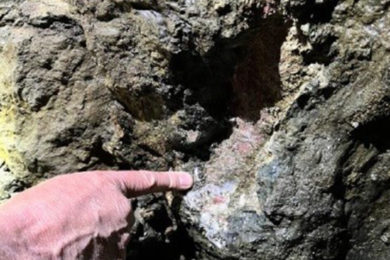Solid Energy has placed further orders, totalling NZ$65 million, for additional mobile plant and equipment for its Stockton open-pit mine. Delivery is expected to be completed by the end of 2010. Barry Bragg, Solid Energy’s COO and Stockton Alliance Chairman, says the fleet upgrades are already delivering safer and more productive tonnages. “At the time we moved to Stockton Alliance operation last October the mine had more than 200 mobile plant units and was moving an average of 500,000 m3 (bank) of waste rock a month,” he says. “With the core mining fleet upgraded, plant numbers have dropped to 134 units and the monthly waste rock movement has increased to over 700,000 m3 (bank) in recent months.
This second tranche of mobile plant orders for the Buller export coal mine follows NZ$75 million worth of orders placed in September 2009 to update the mine’s core mining fleet. These investments in mobile plant, along with approximately NZ$15 million in infrastructure upgrades and NZ$124 million to design and build a coal handling and processing plant, takes Solid Energy’s investment in Stockton to just under NZ$280 million in the last 18 months. The mine is operated jointly by Solid Energy and Downer EDI Mining NZ through the Stockton Alliance.
The latest contracts, for a range of Caterpillar machinery and Haulmax trucks from Gough Gough & Hamer will complete Stockton’s coal mining fleet, upgrade its primary coal haulage capacity and provide the smaller mobile plant needed for on-site civils work (mine-site rehabilitation and building and maintaining the mine’s roading and extensive water management infrastructure).
Also on order from Goughs is a suite of sophisticated equipment which uses global positioning technology to improve fleet management. Fitted to the mine’s new mobile fleet, it will improve mining accuracy and enable more precise recording of coal and overburden movement from pits to stockpiles and dumps, as well as alerting maintenance crews when preventative servicing is required.
“When this second tranche of equipment is fully on site, the total fleet will be reduced to 114 pieces, a reduction of more than 40%, and Stockton Alliance’s target, from July, will be to move 900,000 m3 (bank) of waste rock a month to expose the coal for mining. We will fit the high-precision GPS system to all our main trucks, diggers, bulldozers, loaders and drill rigs and this is expected to further enhance production, safety and accuracy,” Bragg says.
Karl Smith, Group CEO of Gough Group, says that this is the second major order for Stockton, both in excess of $60 million, that the company had received from Solid Energy in the last few months. “This is huge vote of confidence in Goughs and its staff and also the Caterpillar product. As a company and dealership we have always had such great faith in the quality of the Caterpillar product and it is fantastic that Solid Energy and the Stockton Alliance have that same faith, both in the equipment and the technical expertise of our Goughs team,” Smith says.
“Orders of this magnitude have a trickle down effect right through the company and out into the community. We had more than 100 staff in Christchurch assembling and commissioning the first phase of the project, and there will be even more this time round.
“The contracts have also had a very positive impact on our apprentice program. This year we took on 13 new apprentices, out of 340 applicants, for heavy diesel mechanical trade and engineering and are already looking to add to those numbers. We currently have 64 apprentices within the business at various stages of their courses and would be one of the largest employers of apprentices in this specialist field,” he says.
Stockton, operated by Stockton Alliance, is Solid Energy’s most valuable operational coal mining asset, delivering high-quality steelmaking coal for export. Stockton’s output underpins KiwiRail’s Midland Line and contributes to the business of Lyttelton Port of Christchurch. Directly employing approximately 600 people through the Stockton Alliance, Stockton has sufficient economically recoverable resources to continue producing for at least another 20 years.








